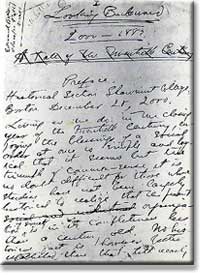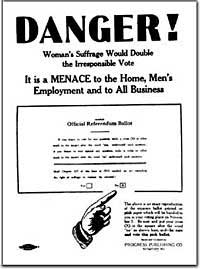42a. Roots of the Movement

The first page to Edward Bellamy's "Looking Backward" in which people from the year 2,000 look back to 1887
The single greatest factor that fueled the progressive movement in America was urbanization. For years, educated, middle-class women had begun the work of reform in the nation's cities.
Jane Addams was a progressive before the movement had such a name. The settlement house movement embodied the very ideals of progressivism. Temperance was a progressive movement in its philosophy of improving family life. "Social gospel" preachers had already begun to address the needs of city dwellers.
Progressive Writing
Urban intellectuals had ready stirred consciences with their controversial treatises. Henry George attracted many followers by blaming inequalities in wealth on land ownership. In his 1879 work, Progress and Poverty, he suggested that profits made from land sales be taxed at a rate of 100 percent.
Edward Bellamy peered into the future in his 1888 novel, Looking Backward. The hero of the story wakes up in the year 2000 and looks back to see that all the hardships of the Gilded Age have withered away thanks to an activist, utopian socialist government.
In The Theory of the Leisure Class (1899), Thorstein Veblen cited countless cases of "conspicuous consumption." Wealthy families spent their riches on acquiring European works of art or fountains that flowed with champagne. Surely, he argued, those resources could be put to better use.

Women's Suffrage Poster
Pragmatic Solutions
Underlying this new era of reform was a fundamental shift in philosophy away from Social Darwinism. Why accept hardship and suffering as simply the result of natural selection? Humans can and have adapted their physical environments to suit their purposes. Individuals need not accept injustices as the "law of nature" if they can think of a better way.
Philosopher William James called this new way of thinking, "pragmatism." His followers came to believe that an activist government could be the agent of the public to pursue the betterment of social ills.
The most prolific disciple of James was John Dewey. Dewey applied pragmatic thinking to education. Rather than having students memorize facts or formulas, Dewey proposed "learning by doing." The progressive education movement begun by Dewey dominated educational debate the entire 20th century.
The Populist Influence
The Populist movement also influenced progressivism. While rejecting the call for free silver, the progressives embraced the political reforms of secret ballot, initiative, referendum, and recall. Most of these reforms were on the state level. Under the governorship of Robert LaFollette, Wisconsin became a laboratory for many of these political reforms.
The Populist ideas of an income tax and direct election of senators became the Sixteenth and Seventeenth Amendments to the United States Constitution under progressive direction.
Reforms went further by trying to root out urban corruption by introducing new models of city government. The city commission and the city manager systems removed important decision making from politicians and placed it in the hands of skilled technicians. The labor movement contributed the calls for workers' compensation and child labor regulation.
Progressivism came from so many sources from every region of America. The national frame of mind was fixed. Reform would occur. It was only a matter of how much and what type.






